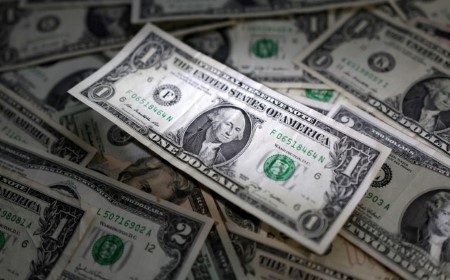




Policy Rate Updates: Double cut finale
 DOWNLOAD
DOWNLOAD

Monthly Economic Update: One for the road
 DOWNLOAD
DOWNLOAD

Inflation Update: Still low, still slow
 DOWNLOAD
DOWNLOAD


US yields extend decline after GDP data, Fed comments

NEW YORK, Nov 29 – US Treasury yields dropped on Wednesday, with the benchmark 10-year Treasury note on track for a third straight session of declines, as the latest reading on economic growth failed to upend market expectations that a Federal Reserve rate cut was on the horizon.
Gross domestic product increased at a 5.2% annualized rate last quarter, revised up from the previously reported 4.9% pace and the fastest pace of expansion since the fourth quarter of 2021, the Commerce Department’s Bureau of Economic Analysis said in its second estimate of third-quarter GDP. However, the effect of borrowing costs on the labor market and spending appears to have stalled momentum.
The yield on 10-year Treasury notes declined 7 basis points to 4.269% after falling to 4.253%, its lowest since Sept. 14. For the month, the yield is currently on track for its biggest drop since December 2008.
Softening economic data, including a reading on inflation two weeks ago, has heightened expectations the Fed has completed its rate hike cycle, while projecting a greater likelihood the central bank will need to cut rates in the coming months.
“We’ve just had a gigantic move and it’s ongoing, it raises the question what’s going on, why the big move and there’s a number of factors – one of them is that when the rates got up to 5% the Fed said, ‘No mas, we are tightening too much,'” said Robert Tipp, Chief Investment Strategist and Head of Global Bonds at PGIM Fixed Income in Newark, New Jersey.
“The next thing that happened was the data started going the right way, the unemployment rate is up and inflation is decelerating and that all points the light in the direction of the next move is going to be a cut… right now everything came together to traverse from the high side to the low side.”
Underscoring the slowing momentum in the economy, the Fed said in its “Beige Book” on Wednesday that US economic activity slowed from late October through the middle of November, while businesses reported inflation largely moderating and easier hiring for jobs.
Markets are pricing in a nearly 80% chance that the Fed will cut rates by at least 25 basis points in May, according to CME’s FedWatch Tool, up from about 65% on Tuesday. Projections for a March cut of at least 25 basis points have also grown and are now showing a nearly 50% chance compared with a roughly 35% chance the prior day.
The yield on the 30-year Treasury bond fell 8 basis points to 4.444%.
Yields fell on Tuesday after Fed Governor Christopher Waller, seen as a hawkish member of the central bank, flagged the possibility of a rate cut if inflation continues to decline.
On Wednesday, Federal Reserve Bank of Atlanta President Raphael Bostic said he expects US growth to slow and inflation to continue to ease on the back of tight monetary policy, although Richmond Fed President Thomas Barkin, a non-voting member of the central bank, said talking about rate cuts is “premature.”
The two-year US Treasury yield, which typically moves in step with interest rate expectations, fell 9 basis points to 4.65% after touching 4.608%, its lowest level since July 13.
Investors will get another look at inflation data on Thursday in the form of the personal consumption expenditures (PCE) price index.
A closely watched part of the US Treasury yield curve measuring the gap between yields on two- and 10-year Treasury notes, seen as an indicator of economic expectations, was at a negative 38.3 basis points, up from a negative 52.62 on Tuesday.
The breakeven rate on five-year US Treasury Inflation-Protected Securities (TIPS) was last at 2.171% after closing at 2.173% on Tuesday.
The 10-year TIPS breakeven rate was last at 2.224%, indicating the market sees inflation averaging about 2.2% a year for the next decade.
(Reporting by Chuck Mikolajczak; Editing by Will Dunham and Deepa Babington)
This article originally appeared on reuters.com





 By Reuters
By Reuters